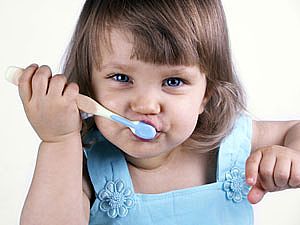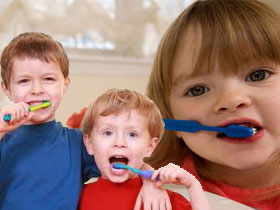 What Are The Main Dental Diseases?
What Are The Main Dental Diseases?
There are two main types of tooth disease: tooth decay and gum infections.
Gum diseases are exceedingly important, because when these are not treated they may even go so far as to cause the jaw bone, in which the teeth are rooted, to dissolve. Impairment of dental health, on the other hand, can affect other organs in the body.
Tooth Decay
The main foods that cause tooth decay are carbohydrates and sugary substances. If the teeth are not properly cleaned after eating such foods, food wastes and germs accumulate on the tooth surface. Bacteria inside the mouth use the sugary substances in food wastes to form accumulations known as plaque. Plaque makes it easier for bacteria to adhere to the teeth. In this way, the acid produced by bacteria, which is present in sugary substances used to sweeten foods, causes the tooth enamel to dissolve by opening up minute cavities in it. Germs entering through these dissolved regions cause tooth decay and can easily reach the underlying tissue.
Gum Diseases
The gum diseases that arise in the event that the mouth is not kept properly clean represent some of the most important oral problems. A gum disease caused by bacterial plaque on the tooth surface leads to infection of the gums, teeth sockets and floor of the mouth. The gums bleed easily right from the initial stage of the disease. If this disease is not treated it may lead to infection of and damage to the jawbone.
Three basic factors in tooth decay are:
• A sensitive tooth surface
• Food wastes ideally suited to micro-organisms
• The presence of micro-organisms that break these down and lead to acid formation
How to Maintain Oral and Dental Hygiene?
• Regular brushing is essential.
• Dental floss must be used.
• Avoid highly acidic and sugary foods as much as possible. Teeth must always be brushed after eating those, because excessively acidic and sugary foods enhance the effect of micro-organisms.
• There must be sufficient fluoride in the water, or else toothpastes containing fluoride should be used. Fluoride makes the teeth more resistant to decay.
• The teeth should not be brought into contact with hard objects.
• Do not use your teeth to break shelled foodstuffs such as walnuts and hazelnuts, because these cause cracking of the tooth enamel and increase the effect of bacteria. This means the elimination of the protective effect of the enamel.
• Visit your dentist at least twice a year.
Hygiene: The Most Effective Way of Protecting the Teeth
• The most effective way of protecting the teeth is to clean them by regular brushing. Teeth must always be brushed after eating.
• There is a special brushing technique. Because although the teeth are covered with a very hard layer, the enamel, they can still be badly damaged if the wrong brush or brushing technique are employed. Erosion of the upper part of the tooth or the layer surrounding the root may lead to retraction of the gums, making the teeth even more prone to decay.
Stage One: Brushing
• Toothbrush selection is very important. Hard brushes may cause scratching of the enamel. The best, unless a special brush is recommended by a dentist, are medium firmness, nylon brushes.
• Brushes whose heads are not too large are to be preferred as these permit easy movement inside the mouth and can reach the back teeth without difficulty.
• Brushing should begin at a 45 degree angle, starting from gum level with small, circular movements towards the oral cavity.
• Brushing starting from the teeth surfaces should not be in the form of harsh movements, but gentle, from the front teeth to the back. The interior surfaces of the teeth should be cleaned in the same way, with chewing surfaces being brushed using circular movements.
• Brushing should last at least 2-3 minutes.
• Toothbrushes should be replaced every few months.
Stage Two: Dental Floss
After brushing, the best way of removing food particles is to use dental floss. Because these particles remaining between the teeth are one of the main causes of decay. However, care must be taken not to cut the gums during this process.
Diseases Resulting from a Failure to Maintain oral and Dental Hygiene
Unhealthy teeth and gums that are not adequately cleaned and cared for represent a focus for infection in the body and can thus have a damaging effect on other tissues and organs. Tooth decay has been determined to lead to sinusitis, tonsil infection, rheumatism, bone wastage, diabetes, and respiratory system, heart disease and digestive problems.
OUR PROPHET (SAAS) ATTACHED GREAT IMPORTANCE TO DENTAL AND ORAL HYGIENE
When we look at his life and hadiths, it can be seen that our Prophet (saas) attached great importance to cleanliness. The Prophet (saas) recommended that believers should be clean in these terms in one hadith: “Islam is cleanliness, the absence of dirt. You, too, must be clean and wash, because it is the clean who enter paradise.” (1)
One of the aspects of cleanliness to which our Prophet (saas) attached great importance was care of the teeth and mouth. In describing the Prophet (saas) his companions stated that his teeth shone like pearls, were spotlessly clean, white and sparkling. (2) We are told that our Prophet (saas) cleaned his teeth using the “misvak” made from the roots and branches of the “arak” tree grown in Arabia.
In addition, our Prophet (saas) was a role model for a society that had no knowledge of cleanliness in the days before Islam, educating people in the most appropriate way by imparting information inspired by Allah. One hadith reports the following words of our Beloved Prophet (saas) on the subject of dental care: “Jabir relates: ‘The Prophet (saws) stated “Crescent cleaning purifies the teeth, whitens them, strengthens their roots and makes the breath smell sweet”.’” (3)
One of the important details set out in the hadith concerns how the teeth are to be brushed. “Crescent cleaning” refers to brushing the teeth using circular, half-moon movements. This technique differs from the right-left brushing technique that damages the enamel and wears away the gums.
Circular movements are recommended by modern dentists, in the same way as reported in the hadith, who state that this is the best way of removing food particles from between the teeth.
1. Ahmad Diya'al-Din al-Kamushkhanawi, Ramuz al-Ahadith)
2. http://www.muhammedmustafa.net/yazilar/mehmetpaksu/distemizligi.htm
3. Onder CAGIRAN, Tıbbi Nebevi (Medicine of the Prophet), 1st edition, Bogazici Yayinlari, Istanbul 1996


